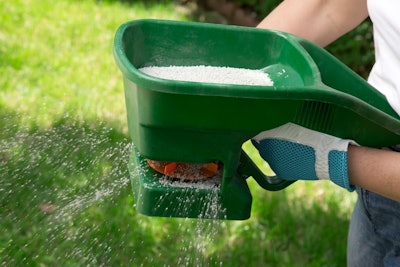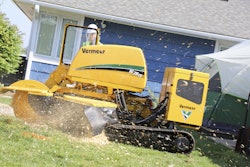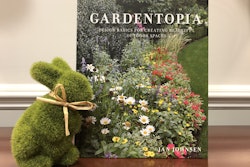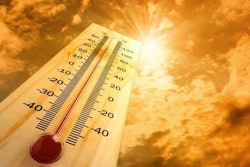
If the fertilizing products you’ve been using don’t seem to be working as well as they should or have done in the past, it might be time to switch to a new type for the upcoming season. If you’ve noticed your products are leaving your customer’s lawn with inadequate turf color and growth, their lawns could be more susceptible to environmental stresses, insect damage, weed infestation and diseases.
Picking a fertilizer may seem like a pretty cut and dry choice, but it can prove to be trickier than you might believe. Many landscaping company owners might stick with one type of fertilizer because that’s what they’ve always used, and others might just choose one because it’s cheaper and they need to save some money. But the thing with fertilizer is that you get what you pay for, and it’s important to know exactly what you’re getting when you buy.
Find out a few tips from the experts about how to evaluate fertilizers and what you need to keep in mind when shopping around.
Know the products
Before deciding on what product to buy, take a look at what all goes into the product.
According to the University of Illinois Extension, the three major ingredients needed by lawns are nitrogen, phosphorous and potassium (NPK). Nitrogen is required the most, but keep in mind that too much nitrogen can cause an excessive amount of top growth, which can cause problems.
“Percent nitrogen (by weight) is always the first of three numbers on the fertilizer bag, followed by phosphorus and potassium,” the University of Illinois Extension says online. “For example, an 18-6-12 fertilizer contains 18 percent nitrogen. This number is important because it determines how much fertilizer is needed. In most cases, a rate of one pound of nitrogen per 1,000 square feet is suggested for each fertilizer application to the lawn.”
It’s also important to keep in mind that the type of nitrogen used in the fertilizers will play into how you can use it. Some companies will manufacture nitrogen fertilizers, like ammonia- or urea-based products, and input suppliers will mine minerals to make phosphorous or potassium fertilizers. Other companies will take these products and add stabilizers or coatings to create stabilized, slow-release and controlled-release formulas, which creates enhanced-efficiency fertilizers (EEFs).
“For lawns, fertilizers containing controlled-release nitrogen sources are suggested for most applications,” the University of Illinois Extension says online. “Check the guaranteed analysis information on the fertilizer label for information on what forms of nitrogen are in the product.”
After this, the fertilizers go to formulators or blenders where they are blended and made into the final product. When the product is with the blender and formulator, these entities will be the deciders of what percentage of nitrogen in the bag comes from EFFs or other sources, as well as the ratio of NPK. The fertilizers will then be sent to distributors for selling and delivery to end users.
The percentage of EEF technology in these fertilizers will affect how long the particular blend will continue to feed the lawn, and blends that contain 50 percent or more EEF are better at enhancing the longevity of the fertilizer.
Synthetic granulated
According to the Michigan State University Extension, synthetic granulated fertilizers are simple formulations that are easy to spread. These products will typically be soaked up quickly unless specifically labeled as slow-release. The extension notes that this type of fertilizer is useful for short-season, high need plants.
“Pelletized fertilizer consists of granules that are uniformly coated, so they are easy to handle and spread but tend to be more expensive,” the Michigan State University Extension says online. “Either of these may have slow-release granules incorporated into the products or may be 100 percent slow release. A slow-release fertilizer has the advantage of being available to the plant over a much longer stretch of time.”
Soluble
Soluble fertilizers, the Michigan State University Extension says, are sold as concentrated liquids or solids, and they are formulated to be diluted with water and then applied to plants directly.
When introduced in this form, nutrients become available more quickly to the plant and can be used to immediately correct a deficiency.
“This very useful type of fertilizer is relatively low cost and most often used in tandem with a slow-release type of fertilizer,” the Michigan State University Extension says online.
Organic
More and more customers seem to be jumping on the organic fertilizer bandwagon, so it’s up to you to be well-versed on the ins and outs of these products.
Understanding what organic fertilizer is and how it’s different from other products is the first step. According to the Michigan State University Extension, organic can simply mean products that contain carbon, which can represent naturally derived sources of fertilizer and urea.
“Generally speaking, products that are composed of organic matter such as composted animal manure, bone meal or leaf litter are accepted as ‘organic’ by gardeners,” the Michigan State University Extension says online.
According to the Clemson Cooperative Extension, organic fertilizers that come from animal and plant sources have a tendency to be less likely to burn or injure plants. The extension notes that the “100 percent” organic claim often refers only to the nitrogen in the bag, and this nitrogen can be derived from natural products like manure or from urea.
The Utah State University Cooperative Extension notes that many customers will flock to the idea of organic fertilizers because they believe it is better for the environment than using typical fertilizers, but that’s not always the case.
“A common misconception is that organic fertilizers are safer for plants and the environment than inorganic (chemical) products,” the Utah State University Extension says online. “Improper organic fertilizer application can also contribute to surface and groundwater pollution, may induce a plant nutrient deficiency or toxicity or cause salt burn. Properly used, both organic and inorganic fertilizers are safe for plants and the environment.”
According to the Michigan State University Extension, one advantage of using organic fertilizer is its ability to slowly release nutrients, as this helps plants that live for more than one season. The second advantage the extension notes is that it positively impacts the soil’s ability to hold nutrients, air and water.
Economic advantages
While it’s true you may have to pay a higher upfront cost for these fertilizers with higher percentages of nitrogen, you may still end up saving some money in the long run.
With this higher nitrogen percentage, it’s possible that it won’t take as much product to properly fertilize your customer’s lawn, which means you can make your bags of fertilizer stretch across more than one project. This also means that your employees might not have to spend as much time in the fertilizer application process, which frees them up to complete other tasks around the project site.
“If high percentage nitrogen fertilizers are used, then less actual fertilizer product is needed to supply that one pound compared to fertilizers with low percent nitrogen,” the University of Illinois Extension says online. “Recommended ratios of NPK for lawn fertilizers include 3:1:2 or 4:1:2.”










